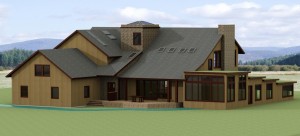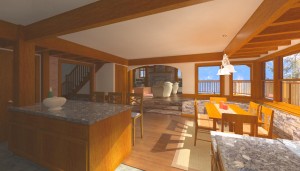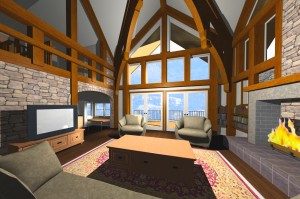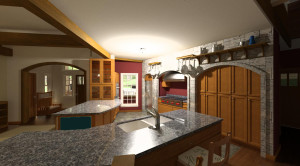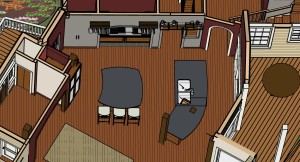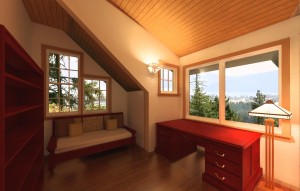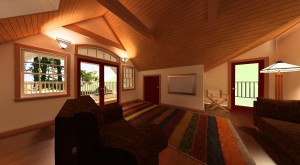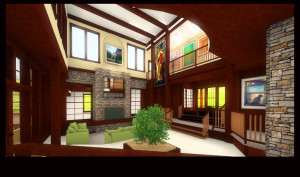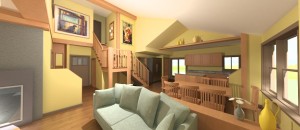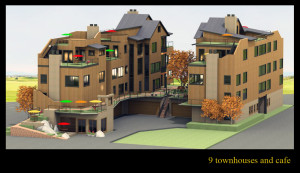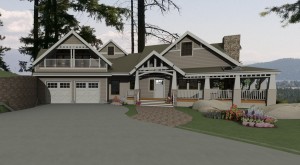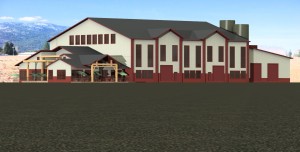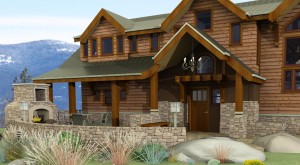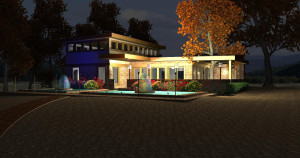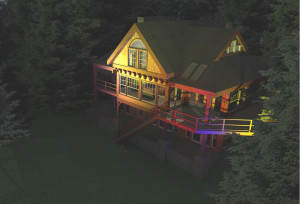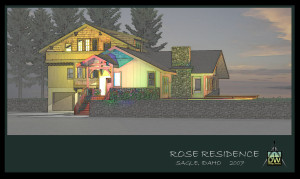Guide to FKA’s architectural process (green-sheet)
Architecture is a process as much as a product, a method of making decisions based on drawings and conversation. The following is a summary of how we go about the design process at FKA. The intention is to explain our methods to new clients, prospective clients might be interested as well.
In our office we allow for the distinction between the art and the technology of building. Sean oversees the technical aspects, making sure the project is done correctly. I take care of the artistic and human-based sides of the field, my job is to make sure the project is done well. We enjoy this business arrangement because it lets us focus on our natural skills, both left-brain and right-brain thought is essential to good architecture. In practical terms it means that I take the lead early in the process, Sean takes the helm in the later phases. We employ two drafters to draw the final plan sets.
Most projects do not need the full process described here. It is up to the client to decide how much designing is needed. Simple commercial buildings go straight to Sean’s desk. Often clients will need only the first phase, a basic concept clearly drawn out. This can be helpful to builders who wish to interest investors, as well as real estate agents who wish to sell a parcel of land.
1. The Initial Conversation and Site Visit
If the land has been purchased, I prefer meeting clients for the first time on site. I try to get a sense of how the new owners see the land, what they react to, the particulars of why they chose it. I check the light and the views, the slope, which trees might want to be kept and if there are other significant landscape features to be incorporated.
There is a naturally efficient order to architectural decisions. As in any art, the broad strokes come first, the key is chosen. The first decision to make is the placement on the site, which will affect light and views, as well as outdoor spaces and access pathways. Placement needs to be chosen with an idea in mind of the general massing of the structure, along with the basic ambiance and style that is desired. To get a feel for this, after talking with the owners I like to simply sit at the site for a while, giving my thoughts some freedom to explore. I take a few guesses, imagine a few possibilities – I like to form a vague but definite answer to one very general question: what should be built in this particular place, with these particular requirements, for these particular clients?
Some time ago I saw a video about Innuit carvers. They choose the tusk they wish to carve and then ask themselves the same question – what should this become? Perhaps this part of the process is about clearing away my own personal ideas, letting the project define itself, allowing the known parameters to sort themselves out on their own. I don’t expect these initial guesses to be correct, nor do they need to be. Sometimes the land is easy to read, sometimes it takes a while. Any starting point will work as long as the design process goes correctly.
Throughout the visit (and the entire process) I construct potential homes in my mind, in some detail. Of all the tools in my designer’s kit, this is one of the most important. I do not believe in designing in two dimensions, on paper. For a house to belong to the land it sits on and reflect the values of the owners, thinking with paper representations is too clumsy and slow. Drawings are a way to describe thoughts, and further develop the 3D visualizations, but cannot replace them.
The concrete information I need from the first visit is about room uses and sizes, also the desired connections between them. These can be simple parameters such as a 1000 square foot 2bed/1bath, or specific requirements for specialized needs, such as an area for building guitars. For residences, I ask quite a few life-style questions – such as whether an outdoor dining area would be well used, if stairs would be a nuisance, if there are hobbies to consider such as cooking or tinkering.
Some clients bring photographs, this helps immensely. The pictures might be of a roof-line, a siding-style, a paint color, a kitchen design, a built-in cabinet or a garage door – the photographs often tell me more than words can, they give me a chance to ask questions about design assumptions that would otherwise remain hidden. I do not put a time limit on meetings, I’ll want to take a look at every photograph. It helps me considerably to have an annotated scrap-book I can refer to as I design. We do not charge a fee for meetings or phone calls so that communication is never hindered.
If the communication doesn’t feel easy it will limit the quality of the work. If a designer is too strongly opinionated, the customization of the project will be limited. If the designer has few opinions of their own, this removes a valuable resource from the project. Collaboration and imagination, as well as technical competence, are necessary for the work. One of the contractor’s we enjoy working with, Jerry Cox at Winterhawk, has a favorite truism, “It’s all about who you work with.” I agree with him every time he says it. (contact info for Winterhawk is on our references page).
2. The First Round of Drawings
The first drawings are a buffet of ideas, a wish-list of possibilities. I don’t draw in many of the details, because I expect the structure to change considerably, but I keep them in mind as I draw. It’s room sizes and proportions that concern me most.
My role in the client-designer collaboration is to mention rather than suggest possibilities, to communicate the advantages and disadvantages of each objectively. To me, the joy of architecture is to encourage, expand, facilitate, and appreciate the creative ideas of the clients. From my point of view as a designer, the process is a lot like traveling, seeing places I haven’t seen before, through the outlook and values of the people I work for. I have plenty of personal opinions, which I share freely, but to design according to them would be like buying a plane ticket to the same airport I depart from.
Also, design is simply too large a field, too inherent to everyone’s life, to be the domain of only one group of thinkers. I take care to support the design skills my clients bring to the table. Emerson noted that “The eye was placed where one ray of light might fall, to report on that particular ray.”
With a cup of dark roasted coffee in hand, going off the ideas from the initial conversation and the site visit, I start putting the thoughts on paper. From my home office on Baldy Mountain (a cobb/strawbale structure) I have a beautiful view of Dover and the Pend Oreille river. I spend most of my design hours tucked away up here, I don’t think I could do this work well in an unispiring place.
First I draw in walls and doors. Traffic-flow and room adjacencies are the underpinnings of architectural design. I check the total square-footage of the traffic areas and rearrange these pathways until they take up as little space as possible, yet do not cut directly through any livable spaces such as the kitchen or sitting area. I group bathrooms and laundry if I can, to help reduce costs and mitigate pipe noises. I pay a lot of attention to views and view-lines. I believe sunlight is very important so I check the window placements for both summer and winter light. When the walls seem generally in place I add a roof-line, finishing the 3D drawing enough to convey a sense of the structure.
At this stage the drawings are meant mostly as questions – to double check that I’ve heard the requirements correctly, while allowing me to draw in any ideas that I think might want consideration. Here are some examples of first-round drawings. The computer makes them look very clean and finished but they are still sketches. I provide both standard plan drawings and 3D images, to help fully convey the ideas.
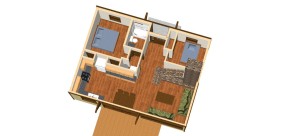
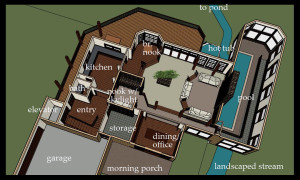
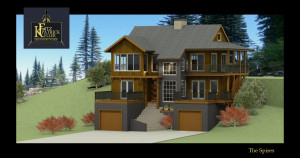
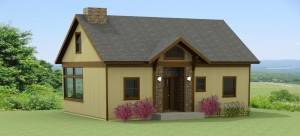
These drawings are points in a repetitive process, I provide as many alternatives as needed, starting from scratch if needed, until the right one shows up. Every client has a different way of helping guide the design towards what they want and need. Every once in a while I get close the first time through, but I don’t expect it. As long as the drawings guide the conversation well, the design will settle as it should. Sometimes these alternatives are disparate enough so that taking the time to triangulate between them is helpful. By using the alternatives to stake out and explore design goals, the best way forward often becomes more clear. Some clients have a very clear sense of what is needed before any drawings get done, others use the design drawings to explore freely.
Here’s a few examples of alternates, these are all from the same project
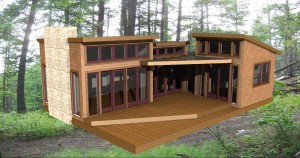
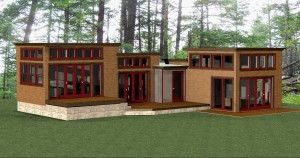
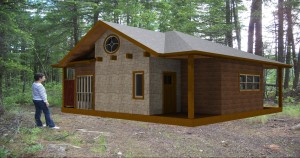




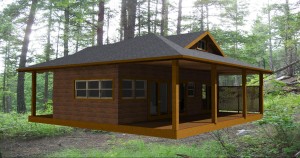
I like to schedule an in-person meeting as soon as the drawings meet all the general requirements. The entire design process can be done through emails, but listening to the tone of spoken words helps me make sure that everyone is enjoying the process, it’s the best cue I can get as to whether the design is truly on track. ‘We’re doing better than expected or imagined’ is the feedback I look for.
Second Phase Drawings
After the general shapes are defined, it usually takes a few more rounds of drawings to fine-tune the spatial aspects. Closet placement and sizes, tubs versus showers, kitchen sink and dishwasher placement get discussed. The conversation continues in emails with drawings attached, meetings are scheduled as often as needed.
The slower this stage goes, the better the final product will be. The Buddhists talk of the world of 10,000 things, proving that the Guatama had studied architecture.
I trim off any unnecessary floorspace. Though an inch too small can keep a space from functioning, too much extra space will strain the budget and allow ghosts in the corners. In order to do this accurately I draw in all important furniture and fixtures. If clients have specific items to place I draw these in too. It’s at this stage when the tone of the spaces can start to be seen. Here are some of the interior renderings I use to help visualize the result.
I develop the exterior further as well, giving some thought to siding textures and landscaping, and making sure all outdoor spaces function correctly. Here are some exterior renderings from this stage.
I check the work by taking an imaginary walk through the house I’ve built in my mind. I sit on the sofa to check the view, sipping an imaginary cup of coffee, perhaps I’ll get up to answer the door for guests. On the plans later, I’ll add a mirror and a bench by the entry. Architecture is an experiential art, I believe plans must be translated back into experiential thought to be correctly reviewed. I spend enough time in these mental representations of houses that I bring my own light bulbs.
I check the drawings against the budget again. In the first phase of the design process all wishes and goals are acknowledged in the drawings, by this point the lowest priorities should have been cut free.
If possible, I stake out the building on site to help show the clients where the views will be, to check the garage access, the functionality of the outdoor spaces, etc.
**
If a bank loan will be taken out to fund the project, the loan process can start based on the drawings at this level of completion. Projects often pause at this phase to get the funding settled. From here out the work changes, the progress becomes more predictable, steady and at times tedious. Next up are the nuts&bolts decisions, and there are catalogs with thousands of fasteners to choose from. The questions and decisions multiply until it feels like you have to step over boxes of them just to get to the breakfast table.
Design Development – sectioning of design questions
The plans at this stage are something like a filing cabinet. Issues and potentials are circled and labeled so that each one can be dealt with separately. New ideas can be penciled in to consider. Focused drawings, cross-sections and details are added as needed.
This is the phase where railing styles are determined, appliances are chosen so that I know their specs, and window placement is scrutinized. This is the stage where an interior designer is added to the team if the client wishes. We usually ask Dion William, at DWdesign, to join the conversation.
Budget often becomes the primary issue at this stage. Designing-to-budget requires an intense collecting of information, from the cost of the floor tiles to the size of the deck-posts. Throughout the design process I try to provide rule-of-thumb cost estimates, but it is at this stage when the bottom line on the budget sheet can cause real consternation.
Sean often comes in at this stage to help with the research, for heating and roofing systems, truss costs, and general pricing. Mostly we leave it to the client or an interior decorator to shop for flooring, bathroom tiles, fixtures, doors and appliances, though we help as we can.
Contract Documents
While I think about the appliances and railing styles, Sean asks about heating and cooling, checks the structural loads, and helps figure out the most appropriate foundation design. By the time he begins to draw, all questions should be satisfactorily answered and all issues resolved.
Everything I draw is a work in progress, to be further developed, altered, re-thought at any time. When Sean draws a line he prefers to get it right the first time through – correct to draw, precisely placed, properly weighted. I take constant shortcuts to make the process reasonably efficient, he counts every cobblestone he walks over. We both see this inherent difference between us as the greatest benefit of a combined office.
For most residential projects, Sean’s technical expertise is an unnecessary expense, the plans can be sent directly to one of our two drafters. Truss and beam companies engineer their products for free, and this can be a large savings for the clients.
When the plan-set is complete, the permits can be filed, the contract to build can be signed, and construction can begin. It is best to choose a general contractor as early in the process as possible, I do not like handing projects over to Sean until a contractor is on board. Contractors sometimes have their own methods and preferences on how things should be drawn and built. It works out better for us to accommodate, rather than re-train them.
Architects On-Site
I’ve never sunk an eight-ball without guiding it carefully towards the pocket with unbroken attention. I assume it would roll just the same without my encouragements, but I watch it nonetheless. The final product of design is not a plan-set but a home, and there are certain times I like to be on site to make sure that everything is accounted for. Sean also believes it’s important to make site visits to make sure the work is going correctly.
I like to see the site when the excavation is completed, before the corner stakes have been set. Grades can be difficult to visualize because optical illusions occur. I check the height of the first floor from the ground at all doorways. Adjustments can be made in the height of the stem walls if necessary. I also check the view from all windows. At times I ask that the house be moved a few feet or turned a few degrees, to expand or shorten a view or to protect a nearby tree.
When the building is framed I come back just to make sure the structure is in line with the plans. Every once in a while I catch small mistake, mostly I just enjoy seeing the place come to life. Sean has the sharper eye, he tends to catch issues before I do.
If possible, I meet on site with the clients to discuss lighting and electrical options, it helps when the plans can be seen at full scale, in three dimensions. Once a lighting plan is sketched out, I schedule a meeting that includes the electrician, to add professional input and finalize the decisions.
I always advise my clients to bring donuts for the construction crew, it helps the motivation when they know the faces behind the plans. (Don’t stay too long or the work slows down on your dime.)
Lastly, I enjoy being invited over for a glass of wine when the moving-in is finished. There was a Los Angeles architect in the modernist era, Peter Eisenman, who was once asked if he liked to go back to see his projects when they were complete. His reply became somewhat notorious, “I never go back, the owners ruin it with personal belongings.” As for myself, I find a great joy in seeing the owners continue the architectural process of making the place their own.
Conclusion
I hope this summary has helped clarify our working methods for prospective clients. Please keep in mind that the method described is the full-service option. For most residential projects we can keep the cost far below that of other architects by strategizing the needs of the clients, doing no unnecessary work while attending fully to the work that needs doing.
I believe information and communication are key to all successful projects. It’s always best to work with people who display an understanding of your basic goals, please don’t ever accept unnecessary discouragement in the guise of professionalism. Most of all, enjoy the project and do it well. If you have questions please call me at 208-263-3172, or Sean at 208-610-6724

